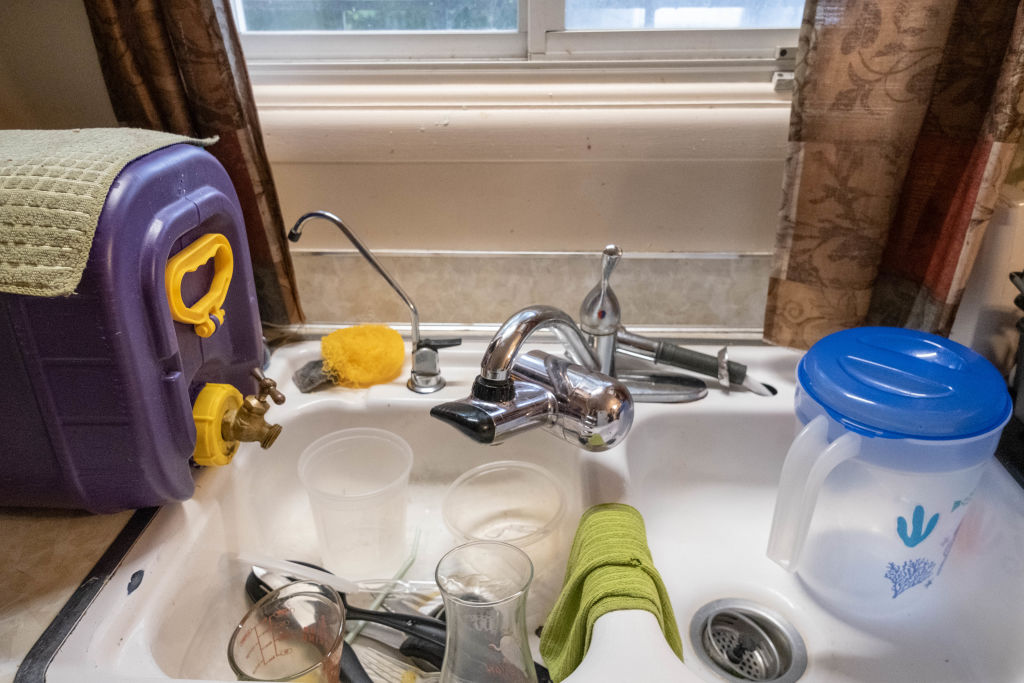In April 2014, the city of Flint, Michigan changed their water source supply from Lake Huron to the nearby Flint River. The attempt to cut costs resulted in corrosion of the water pipes and lead contamination in the city’s water supply. 10 years later, some residents still do not have clean running water.
For nearly 18 months, Flint residents were exposed to toxic lead levels and bacteria, even leading to an outbreak of an aggressive form of pneumonia known as Legionnaires’ Disease which claimed the lives of dozens.
What did samples reveal about Flint’s water?
Water samples revealed Flint’s water supply was nearly 1,000 times the “action level” of lead contamination determined by the United States Environmental Protection Agency (EPA).
A state of emergency was not declared in Flint until January 2016. The following month, the United States Department of Health and Human Services provided $500,000 to two Flint health centers to fight the issues that resulted from the tainted water supply.

Since 2016, the water source was returned to Lake Huron while millions of dollars were invested into replacing corroded pipes and investing in at-home filtration systems. In total, the State of Michigan provided Flint $350 million for pipe replacement, water quality improvements, and more. While the state reports Flint water quality has met federal safety standards for the past 8 years, some residents still refuse to drink the tap water.
The crisis gained national attention as an example of years of inequity and municipal negligence leading to environmental crisis. A report from the Flint Advisory Task Force acknowledged that “Flint residents, who are majority Black or African American and among the most impoverished of any metropolitan area in the United States, did not enjoy the same degree of protection from environmental and health hazards as that provided to other communities.”
How Little Miss Flint became an advocate
Then 6-year-old Flint resident Mari Copeny, nicknamed “Little Miss Flint,” became a recognized youth activist on social media representing the thousands of children facing the brunt of the water crisis.
“An entire generation of kids that don’t know what it’s like to not worry about the water poisoning them,” said Copeny via Instagram in April 2024, now 17, commemorating 10 full years since the water crisis began.

What is the status of the lawsuits?
Major class action lawsuits were filed as early as 2016 regarding liability for the water contamination. In 2020, a county judge approved a $600 million settlement paid by the State of Michigan to settle lawsuits pertaining to the water supply. However, as of 2024, residents still haven’t received a penny from the landmark litigation.
In 2024, the litigation reached a settlement of $25 million paid by engineering firm Lockwood, Andrews and Newman, one of the organizations found partially responsible for inadequate water testing protocols that led to exacerbation of the lead contamination. The lawsuit included $1,500 payments for minors involved in the class action.

Have changes to Flint’s water system been made?
After reversing the water source from the Flint river, the city went home to home to replace corroded pipes. A 2017 legal agreement mandated “that Flint finish replacing lead service lines and restoring residents’ properties” originally by January 2020, but extended to September 2022 due to the COVID-19 pandemic. As of 2024, nearly 2,000 homes have not had their pipes replaced and do not have access to running water that is lead-free. A federal court found the city of Flint in contempt for violating a court order from 2023 to reach certain milestones in the replacement process.
While Flint officials said they ran out of funds to complete the remaining repairs, the State of Michigan filed a motion to take over the replacement process and vowed to have them completed by August 2025, according to Bridge Michigan.
The Flint water crisis reintroduced the country to the idea of “environmental racism” in 2014. 10 years later, the ongoing infrastructural and legal battles are a resounding reminder of the institutional failings and harm suffered by those who call Flint home.
The post 10 Years Later: Flint Water Crisis appeared first on Blavity.

